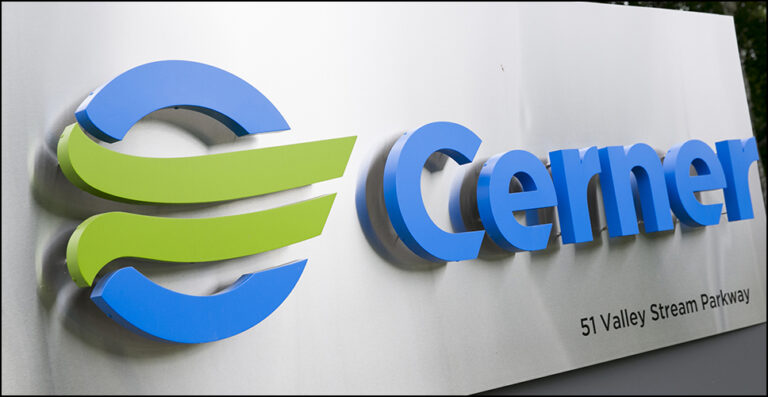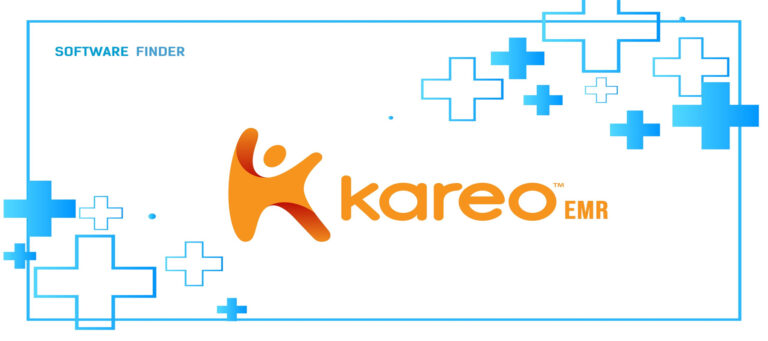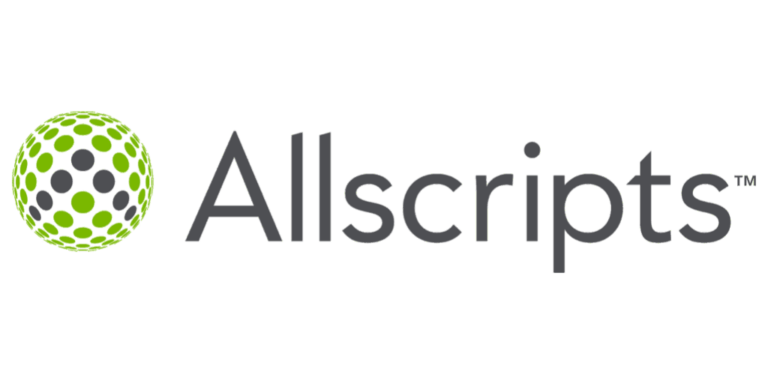Electronic Medical Record (EMR) software, also known as Electronic Health Record (EHR) systems, has become an integral part of modern healthcare, but its cost often goes unnoticed by employers and can be a significant burden for physicians. These systems, which can be cloud-based or on-premises, require careful cost management and consideration of various factors such as licensing, subscription models, and data migration.
Recent insights from healthcare experts have shed light on EMR costs and the various options available to healthcare providers, including cloud hosting solutions and on-premise servers.
EMR Costs for Employers
The cost of EMR software for employers is often hidden within healthcare claims, amounting to a surprising $40-$50 per employee per month (PEPM). This price breakdown includes not only the software license but also potential costs for cloud storage, backup solutions, and internet connectivity. Here’s how it typically breaks down:
- The average health plan cost per employee is approximately $10,000 per year.
- After accounting for insurance company fees, about $8,500 goes toward claims.
- EMR companies may charge up to 7% of physician practice revenue.
- This translates to approximately $595 per employee per year, or $50 PEPM.
These costs, while not immediately apparent, contribute significantly to overall healthcare expenses for employers and impact the money available for other aspects of patient care.

EMR Costs for Physicians
For physicians, the financial impact of EMR software is even more substantial, affecting both start-up practices and established hospitals:
- An average physician collects about $1.5 million in revenue annually.
- At 7% of revenue, EMR costs can reach $105,000 per year per doctor.
- This is equivalent to the cost of a high-end luxury vehicle every year.
- Physicians essentially work almost one full month each year just to pay for their EMR.
This financial burden can significantly impact a physician’s take-home pay and overall practice profitability. It’s crucial for physicians to consider optimal solutions that balance functionality with cost-effectiveness.
EMR Pricing and Options
Recent research on various EMR platforms reveals a range of options and prices for healthcare providers, from cloud-based solutions to on-premise installations:
- Comprehensive EMR Systems: Most full-featured EMR systems with telehealth capabilities cost between $200-$300 per month. These typically include features such as patient scheduling, e-prescribing, and basic billing functionalities. Many vendors now offer cloud-based options with subscription models, eliminating the need for on-site servers.
- Direct Primary Care Solutions: Platforms designed for direct primary care practices often cost around $300 per month. These include features like telemedicine, e-prescribing, and lab integrations, catering to the specific needs of subscription-based medical practices. Some solutions offer document management capabilities and patient portals for improved communication.
- Tiered Pricing Models: Some EMR providers offer tiered pricing structures. For example, one popular platform starts at $275 per month for direct primary care practices, with higher tiers for more complex needs. These tiers may include additional features like advanced dashboards or enhanced disaster recovery options.
- Budget-Friendly Options:There are more affordable EMR solutions starting at around $150 per month. However, these may lack some advanced features or have limitations on the number of providers or patients. Some vendors offer free downloads with basic functionality, allowing users to upgrade as needed.
- Pay-Per-Patient Models: Newer entrants in the EMR market offer flexible pricing based on the number of active patients, with some starting as low as $50 per month plus a per-patient fee. This model can be particularly beneficial for start-up practices or those with fluctuating patient volumes.
- Enterprise Solutions: For larger healthcare organizations and hospitals, EMR costs can range from $500,000 to several million dollars for implementation, with annual maintenance fees in the hundreds of thousands. These comprehensive EHR systems often include advanced features for meaningful use compliance and support for multiple hospital departments.
Real-World EMR Software Costs
Here are some examples of real-world EMR software costs, showcasing the variety of pricing models and the impact of factors like practice size and chosen vendor:
A small 3 physician family practice paid:
- $400 per provider per month for athenahealth EMR
- $2,000 one-time implementation fee
- Total first year cost: ~$18,000
A 15 doctor pediatrics clinic paid:
- $549 per provider monthly for NextGen Healthcare EMR
- Additional training, support, and implementation fees
- Total first year cost: ~$100,000
A 50 provider multi-specialty practice paid:
- $1,200 per provider annually for Epic EMR
- Customization, hardware, training, and implementation costs
- Total first year cost: ~$750,000
A rural health clinic with 5 providers paid:
- $200 per provider monthly for drchrono EMR
- Additional implementation costs
- Total first year cost: ~$15,000
A 2 psychiatrist, 1 psychologist behavioral health office paid:
- $7,500 one-time fee for TherapyNotes EMR
- $99 per provider monthly
- Total first year cost: ~$11,500
A solo doctor practice paid:
- $0 for Practice Fusion’s free EMR
- $3,000 for implementation assistance
- Total first year cost: ~$5,000
In summary, first year costs vary widely from $5,000 to $750,000+ depending on size, features, and vendor. Ongoing costs typically $200 to $500 per provider monthly.
These costs often include support for data migration, user training, and software updates.
EMR Cost: Common Hidden Fees for EMR Software
When budgeting for Electronic Medical Records (EMR) software, it’s essential to be aware of potential hidden fees that can impact your overall costs. Here are some common hidden fees associated with EMR software:
Implementation and Setup Costs: Implementation and setup costs can vary widely depending on the complexity of your practice’s needs and the chosen EMR provider. On average, expect to budget anywhere from $5,000 to $20,000 for this phase. This may include costs for data migration from previous systems.
Training Expenses: Basic training may be included, but advanced or ongoing training sessions can cost an additional $1,000 to $5,000 or more, depending on the level of training required. Some vendors offer live chat support as part of their training packages
Data Conversion Fees: Data conversion fees can range from $2,000 to $10,000, depending on the volume of data to be transferred and the complexity of the process. This is particularly important when switching from one EHR system to another.
Support and Maintenance: Ongoing support and maintenance fees typically range from $100 to $500 per user per month. For a small practice with 5 providers, this could translate to approximately $6,000 to $30,000 annually. This often includes updates to ensure compliance with best practices and regulatory requirements.
Interoperability Costs: Interoperability efforts may cost several thousand dollars, especially if extensive integration work is needed to connect with hospital systems or other healthcare networks.
Hardware Costs: If you opt for in-office solutions requiring hardware, hardware costs can range from $5,000 to $20,000 for servers and related components. Cloud-based solutions may reduce these upfront costs but incur ongoing subscription fees.
Add-On Modules and Features: The cost of add-on modules and features varies, but these can range from $100 to $1,000 per user per month, depending on the functionality. This might include advanced e-prescribing capabilities or specialized document management tools.
User Licensing Fees: User licensing fees may add $50 to $200 per additional user per month to your expenses. It’s important to consider the number of users who will need access to the system.
Data Storage Fees: Data storage fees can vary widely based on the amount of data stored. Budget for an additional $100 to $500 per month for extra storage capacity, especially if you need to store large files like medical images.
Upgrades and Customization: Upgrades may cost 10% to 20% of your initial software license cost. Customization expenses depend on the extent of changes needed but can range from $5,000 to $20,000. Some vendors include regular upgrades in their subscription models.
Penalties for Early Contract Termination: Early contract termination penalties may range from $2,000 to $10,000, depending on the terms of your contract. It’s crucial to review these terms before committing to a vendor.
Third-Party Integration Fees: Fees for third-party integrations can range from $1,000 to $5,000 per integration. This might include connecting to external labs or pharmacies for e-prescribing.
Keep in mind that these cost estimates are approximate and can vary based on factors such as the size of your practice, your location, and the specific EMR software provider you choose. When evaluating EMR software options, request detailed pricing information from providers and consider conducting a cost-benefit analysis to determine the total cost of ownership over time. Read our step by step guide on conducting your own EMR cost benefit analysis.

EHR Cost Too High? Alternative Solutions
For healthcare providers looking to minimize EMR costs, several alternative solutions are available:
- Telehealth Platforms: Using free or low-cost telehealth platforms combined with basic e-prescribing services. For instance, some telehealth solutions are free for unlimited call minutes and meet HIPAA requirements, while e-prescribing services can be obtained for around $650 per year.
- Practice Management Software: Some providers opt for practice management software designed for health coaches, which can be more cost-effective for small practices. These solutions often start at $20-$30 per month for a limited number of clients and may include basic document management features.
- Free EMR Options: There are free EMR options available, often created by individual physicians or small teams. These offer basic functionality at no cost, with add-ons like e-prescribing available for modest monthly fees. However, they may lack advanced features like comprehensive patient portals or robust disaster recovery options.
- DIY Solutions: Some practitioners use HIPAA-compliant cloud storage solutions to create their own documentation systems. While this approach can be cost-effective, it may be cumbersome and lacks the advanced features of dedicated EMR systems. It requires careful attention to security and backup procedures.
EMR Prices: The Impact on Healthcare
The high costs associated with EMR software have several negative consequences for the healthcare industry:
- Encouragement of Fee-for-Service Models: High EMR costs can push providers towards fee-for-service models to maintain profitability, potentially conflicting with the industry’s move towards value-based care.
- Administrative Waste: The significant financial investment in EMR systems contributes to administrative waste in healthcare, diverting resources from patient care. This includes time spent on software development and customization.
- Reduced Physician Compensation: With EMR costs consuming a substantial portion of practice revenue, physicians’ take-home pay is directly impacted, affecting their ability to invest in other aspects of their practice or personal development.
- Limited Patient Access: As providers struggle with high overhead costs, they may be forced to see more patients in less time or limit access to care to maintain financial viability. This can negatively impact the quality of care and patient satisfaction.
- Technological Disparities: Smaller practices or those in underserved areas may not be able to afford comprehensive EMR systems, potentially leading to disparities in healthcare technology adoption. This can affect their ability to participate in larger healthcare networks or meet meaningful use requirements.
Considerations for Choosing an EMR
When selecting an EMR system, healthcare providers should consider:
- Practice Size and Type: Different EMR solutions cater to various practice sizes and specialties. Different EMR solutions cater to various practice sizes and specialties. Choose a system that aligns with your specific needs, whether you’re a small clinic or a large hospital.
- Required Features: Prioritize must-have features such as telemedicine capabilities, e-prescribing, lab integrations, and billing functionalities. Consider whether you need advanced features like customizable dashboards or comprehensive document management.
- Scalability: Consider future growth and ensure the EMR can scale with your practice. This includes the ability to add users and expand functionality as needed.
- User Interface and Ease of Use: A user-friendly interface can significantly impact adoption and efficiency. Look for systems that offer intuitive navigation and customizable workflows.
- Integration Capabilities: Ensure the EMR can integrate with other systems you use, such as billing software or lab services. This is crucial for maintaining a seamless flow of information across your practice.
- Support and Training: Evaluate the level of support and training offered by the EMR provider. This includes ongoing technical support, user training, and resources for staying up-to-date with best practices.
- Total Cost of Ownership: Look beyond the monthly fee and consider implementation costs, training expenses, and potential add-on fees. Factor in costs for data migration, ongoing maintenance, and potential future upgrades.
The high cost of EMR software remains a hidden burden on both employers and physicians, contributing to administrative waste in healthcare and potentially impacting patient care.
As the healthcare industry continues to evolve, it’s crucial for providers to carefully consider their EMR options, balancing functionality with cost-effectiveness.
Starting with basic solutions and upgrading as needed can be a prudent approach, especially for smaller practices or those just beginning their digital transformation journey. This strategy allows healthcare providers to manage costs while still maintaining efficient and compliant practices.
Ultimately, the goal should be to find an EMR solution that enhances patient care and practice efficiency without becoming a financial burden. As the market continues to evolve, we may see more innovative and cost-effective solutions emerge, potentially alleviating some of the current challenges associated with EMR adoption and use. This may include more flexible pricing models, improved cloud hosting options, and better integration with existing hospital systems.
EMR Costs FAQ
How Can Healthcare Providers Optimize EMR Costs?
Cost optimization for EMR systems requires a strategic approach. Providers should carefully track resource utilization and leverage cost explorer tools to analyze spending patterns. This involves examining current pricing models, minimizing unnecessary features, and exploring cloud-based architectures that can potentially reduce overall expenses.
Key optimization strategies include:
- Tracking resource usage
- Analyzing spending patterns
- Exploring cloud solutions
What Factors Influence EMR Pricing?
EMR pricing is a complex landscape influenced by multiple critical factors. The size of the practice, number of applications, and specific data analytics requirements play significant roles in determining overall costs. Payment structures, billing models, and performance needs also contribute to the final pricing.
Providers should consider:
- Practice size and scale
- Specific application requirements
- Performance and data needs
Are There Hidden Costs in EMR Systems?
Hidden costs can significantly impact a practice’s budget. Beyond the initial pricing, providers often encounter additional expenses related to data analytics, resource scaling, and cloud infrastructure. Many practices overlook costs associated with estimator tools, feature upgrades, and additional application requirements.
Potential hidden costs include:
- Data analytics fees
- Resource scaling expenses
- Additional feature charges
How Can Practices Reduce EMR Expenses?
Reducing EMR expenses requires a comprehensive approach. Practices should conduct thorough audits of their current systems, exploring discount options and comparing pricing resources. This involves a strategic evaluation of existing applications, billing models, and potential optimization opportunities.
Effective cost reduction strategies:
- Conduct comprehensive system audits
- Explore vendor discounts
- Evaluate current applications
What Should Practices Consider When Evaluating EMR Costs?
Evaluating EMR costs goes beyond simple price comparison. Practices must consider the total cost of ownership, including pricing model flexibility, resource utilization rates, and performance metrics. Community reviews and blog insights can provide additional perspective on potential savings opportunities.
Critical evaluation factors:
- Total cost of ownership
- Resource utilization
- Performance metrics
How Do Cloud Solutions Impact EMR Pricing?
Cloud solutions have revolutionized EMR pricing models. They offer reduced infrastructure costs, flexible resource allocation, and pay-as-you-go pricing structures. These solutions provide enhanced data analytics capabilities and simplified architectural approaches that can significantly reduce overall expenses.
Cloud solution benefits:
- Reduced infrastructure costs
- Flexible pricing models
- Enhanced data capabilities
What Are the Key Metrics for EMR Cost Management?
Effective EMR cost management relies on tracking critical metrics. Practices should monitor hourly and running costs, billing efficiency, resource utilization rates, and overall return on investment. These metrics provide insights into the financial performance of EMR systems.
Important metrics include:
- Hourly and running costs
- Billing efficiency
- Return on investment
How Can Practices Estimate EMR Costs?
Estimating EMR costs requires a multi-faceted approach. Providers can utilize online pricing calculators, consult vendor estimator tools, and analyze blog resources. A comprehensive audit of cluster and application costs, along with evaluating cloud and on-premise options, provides a more accurate cost projection.
Estimation methods:
- Online pricing calculators
- Vendor estimator tools
- Comprehensive audits
By addressing these frequently asked questions, healthcare providers can develop a more nuanced understanding of EMR costs and develop strategies for effective cost management and optimization.
Get Your Free EMR Price Quotes
Ready to explore EMR solutions for your practice? Fill out our quick form to receive:
- Customized price quotes for your specific needs
- Side-by-side feature comparisons
- Special offers and discounts
- Expert guidance on choosing the right EMR
Our network of vetted, top-rated EMR providers will help you find the perfect solution for your practice. There’s no obligation, and the service is completely free.







Leave a Reply